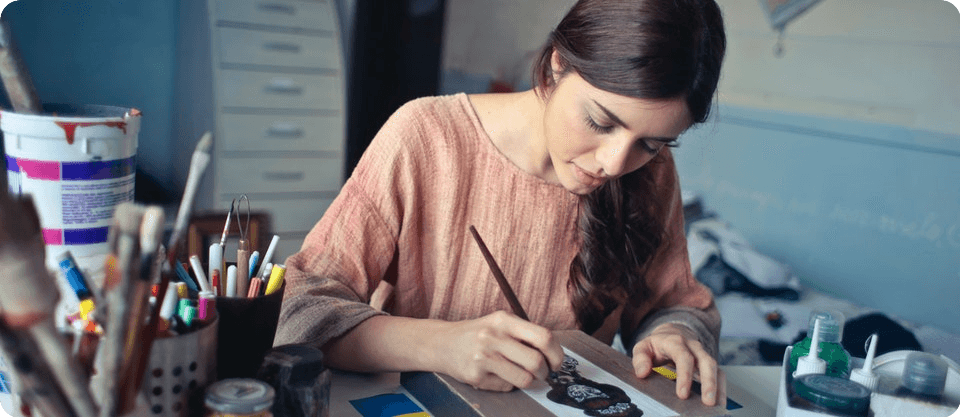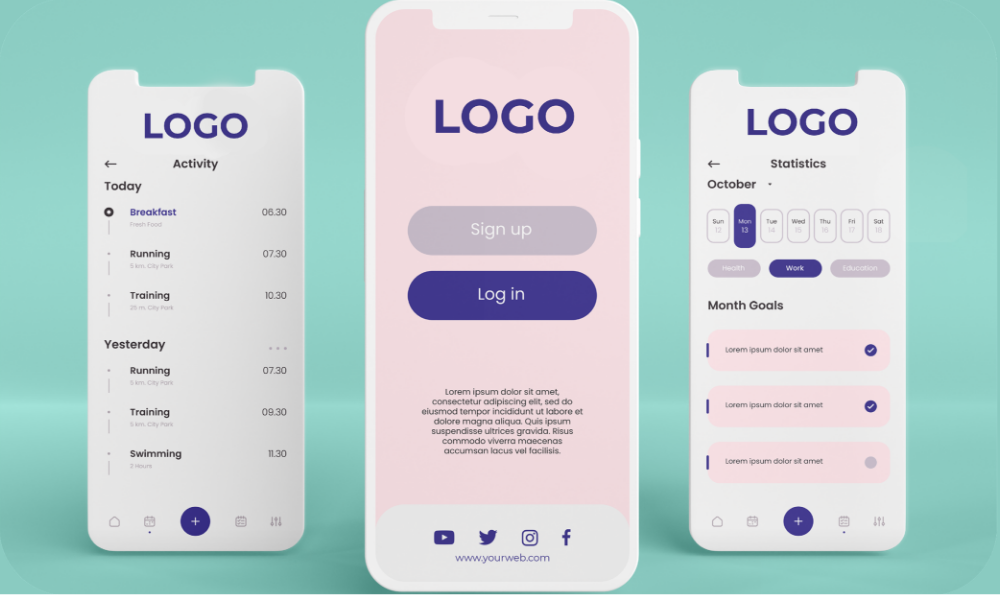
The evolution of fashion design and tips to get started
All people dress their bodies in some way or another. No culture leaves the body unadorned, but embellishes, decorates, and enhances the body. Designers and consumers have shaped fashion at different points in history. Constantly evolving, fashion design is influenced by cultures, religions, new technologies, and creative individuals like you.
The history of fashion design
Knowing the history of fashion can benefit you in all aspects of your career. It will help you to understand how one thing at a certain time influenced another thing at a different time. It will also make you a better, more conscious, and creative designer. Following are the design elements of some of the fashion eras that influenced and revolutionised the world of fashion the most.
The evolution of Fashion
Greek fashion (500 – 146 BC)
- Feminine
- Simple
- Versatile
- Unisex
- Draping
Fabric: Linen with decorated borders
Colours: Natural
Renaissance fashion (1485 – 1520)
- Tight-fitting bodice
- Full skirt
- Full sleeve
- Ruffled collars
- Low neckline
Fabric: Silk, satin, velvet, and taffeta
Colours: Royal
Baroque fashion (1650 – 1800)
- Ornamental
- Tight-fitting bodice
- Full skirt
- Layered petticoats
- Virago sleeves
- Low necklines
Fabric: Silk, velvet, and lace for decoration
Fabric pattern: Elaborate floral
Colours: Dark
Rococo fashion (1720 – 1789)
- Ornate
- Ruffles
- Corset
- Exaggerated full skirt
Fabric: Silk, taffeta, and brocade
Fabric pattern: Floral and stripes
Colours: Pastel
Regency fashion (1800 – 1823)
- Classic
- Empire style
- Low square neckline
- Short sleeves
- Draped
- Decoration at neckline and waist
Fabric: Sheer and lightweight muslin
Colour: White and pale pastels
Romantic fashion (1825 – 1835)
- Gothic influence
- V-shaped bodice
- Beret and Gigot sleeves
- A-line skirt
Fabric: Natural
Fabric pattern: Floral and quilting
Colour: Pastels and warm neutrals
Victorian fashion (1837 – 1887)
- Beauty
- Hourglass silhouette
- Corset
- Full, layered skirt
- Bustle
Fabric: Cotton, silk, satin, lace, and cotton
Fabric pattern: Tartan and stripes
Colour: Bright and colourful
Edwardian fashion (1888 – 1914)
- Elegant
- S-shaped silhouette
- Sheath silhouette
- Square neckline
- Cap sleeves
- Tailored jackets
- Ruffles
Fabric: Cotton, linen, and lace
Fabric pattern: Floral
Colour: White and pastel
During the 20th century, there have been major shifts in politics, social norms, culture, and technology, and fashion has reflected that in its ever-changing cycle of trends. It opened such a variety of styles, at certain times no definitive fashion could be traced. Fashion blossomed as nobody could foresee, and anybody could revolutionise it.
1920’s fashion
- Dropped waist
- Shorter hemline
- Tubular silhouette
- Coco Chanel’s little black dress
Fabric: Silk, satin, and chiffon
Fabric pattern: Beaded and embroidery motifs
Colour: Pastel
1950’s fashion
- Structured bust
- Cinched waist
- Knee-length, full, layered skirt
- Christian Dior’s new look
Fabric: Nylon, Polyester and cotton blends, denim, tulle, and satin
Fabric pattern: Solids and floral
Colour: Primary colours and pastels
1960’s fashion
- Mini hemline
- Mary Quant’s shift dress
- Vivienne Westwood’s punk clothes
Fabric: Natural, brocade, velvet, silk
Fabric pattern: Plaid, stripes, polka dots, and paisley
Colour: Dark and neon
1970’s fashion
- Androgyny
- Power dressing
- Structured suits
- Oversized garments
- Disco
Fabric: Polyester, lycra, and spandex
Fabric pattern: Solid
Colour: Earth tones
1980’s fashion
- Boy George
- Club scene
- Flamboyant
- Romantic
- Historical influence
Fabric: Cotton, polyester, velour, and velvet
Fabric pattern: Shapes and stripes
Colour: Colourful and pastel.
1990’s fashion
- Minimalist
- Grunge
Fabric: Denim, spandex, satin, and natural
Fabric pattern: Camouflage, tartan, lines, and overlapping shapes
Colour: Dark and neon.
The fashion design industry is known to recycle styles and trends. Designing from the past can produce incredibly creative designs that are sure to stand the test of time. To design from the past, please follow the steps below:
1: Research your chosen era
- Silhouettes
- Design details
- Colour palette
2: Create a mood board
- Variety of images
- Layout
- Composition
3: Generate ideas
- Combine old trends with new ones
4: Sketch
What do fashion designers do?
Fashion design is a form of art dedicated to the creation of clothing and accessories. It is the art of the application of design and aesthetics to clothing with a variety of influences including religion, culture, costume, and you, the society.
One of the most beautiful aspects of fashion is that it mirrors the habits and tastes of times. We often talk about the language of fashion, because it truly is a great form of communication, almost like an open book of past and current times.
It also helps us artistically communicate who we are, who we aspire to be, where we are going and where we have been. So, in short, fashion is the manifestation of human art and communication.
Fashion vs Design
The dictionary’s definition of design is the creation of a plan or convention for the construction of an object, a system, or solving a particular problem. Although the definition is 100% correct and design does mean solution, design has a much deeper meaning.
Problem-solving and solutions are allowed to be beautiful, and beauty is often considered the secret ingredient in design, making your product go from pure usability to gratifying pleasure.
Design is a deliberate set of actions that are meant to provide VALUE to the receiver or user. It is about giving meaning to something. It is about the experience.
So, what happens when fashion and design meet?
We create a garment with purpose and great usability, that also provides value and pleasure to the wearer.
A great example of the relationship between fashion and design is the humble T-shirt. Did you know the fashion sector produces and sells between 80 and 150 billion garments in a year across the globe? Of that, about 2 billion are T-shirts, making them one of the most popular items of clothing in the world.
The role of the fashion designer
What is a fashion designer?
Fashion designers are responsible for designing and making clothing and accessories, depending on the type of designer you are. Common responsibilities include:
- Observing fashion trends
- Creating designs
- Utilising computer-aided design
- Interacting with suppliers
- Textile sourcing
- Creating prototypes
- Production of design
- Market and sell design
- Participating in events and fashion shows
- Finding new consumer markets
The fashion industry is very collaborative, meaning you can specialise in one area and once your work is completed, it gets passed to the next person in the design process. It is very rare for one person to do it all unless you are at the beginning stages of owning your brand.
Career opportunities
The designer: creates or visualises an idea and produces a design by hand or using computer-aided design.
The buyer: analyses consumer buying patterns and predicts future trends, manages stock levels, meets suppliers, negotiates terms of the contract and attends trade fairs.
The trend forecaster: studies market conditions and consumer behaviour to anticipate trends.
The textile designer: creates two-dimensional designs printed on fabric.
The patternmaker: produces patterns on either paper or computer for use in the clothing industry.
The garment technologist: works on the development of the product, improves production efficiency and quality of the product.
The fashion planner: uses cultural trends and demographics to allocate the right stock to the right store.
The visual merchandiser: ensures that products appear in the right store and on the website and also plans the catalogs, store layout, and windows. The merchandiser works closely with the forecaster and buyer.
The retail manager: manages the daily operations of a store and will have employees who report to them. The retail manager also needs to manage and motivate a team to increase sales and ensure efficiency.
The stylist: produces visually appealing displays, photoshoots, and outfits.
The event manager: plans and organises a variety of events which include promotional, business, and social events. Especially in fashion, events play a huge part in the success of a brand.
The fashion journalist: Will research, attend conferences and events, conduct interviews, and write articles about fashion for a variety of publications.
The fashion PR: The public relations officer is the person who manages the reputation of the brand and is in charge of planning, developing, and implementing PR strategies.
The future of fashion design
As designers, it is important to follow fashion trends to create appealing products that consumers are interested in.
Even though designers are the ones who create the trends, consumers are the drivers behind the trends.
It is definitely worth it to pursue a career in fashion design if you have a flair for innovation, style, and uniqueness. A fashion designer needs to create appeal and fashion lines. Becoming a fashion designer can be rewarding. But you need to be prepared to work hard and accept modest pay.
We often think we are not enough to make the world a better place. Our efforts are not enough, but if you do your bit and I do my bit, and we inspire those around us to do their bit, it will make a difference. Being a fashion designer has a ripple effect. It affects the economy, it affects people all over the world, and it affects the environment.
Interested in entering the world of fashion design? Take our Fashion Design Course.


